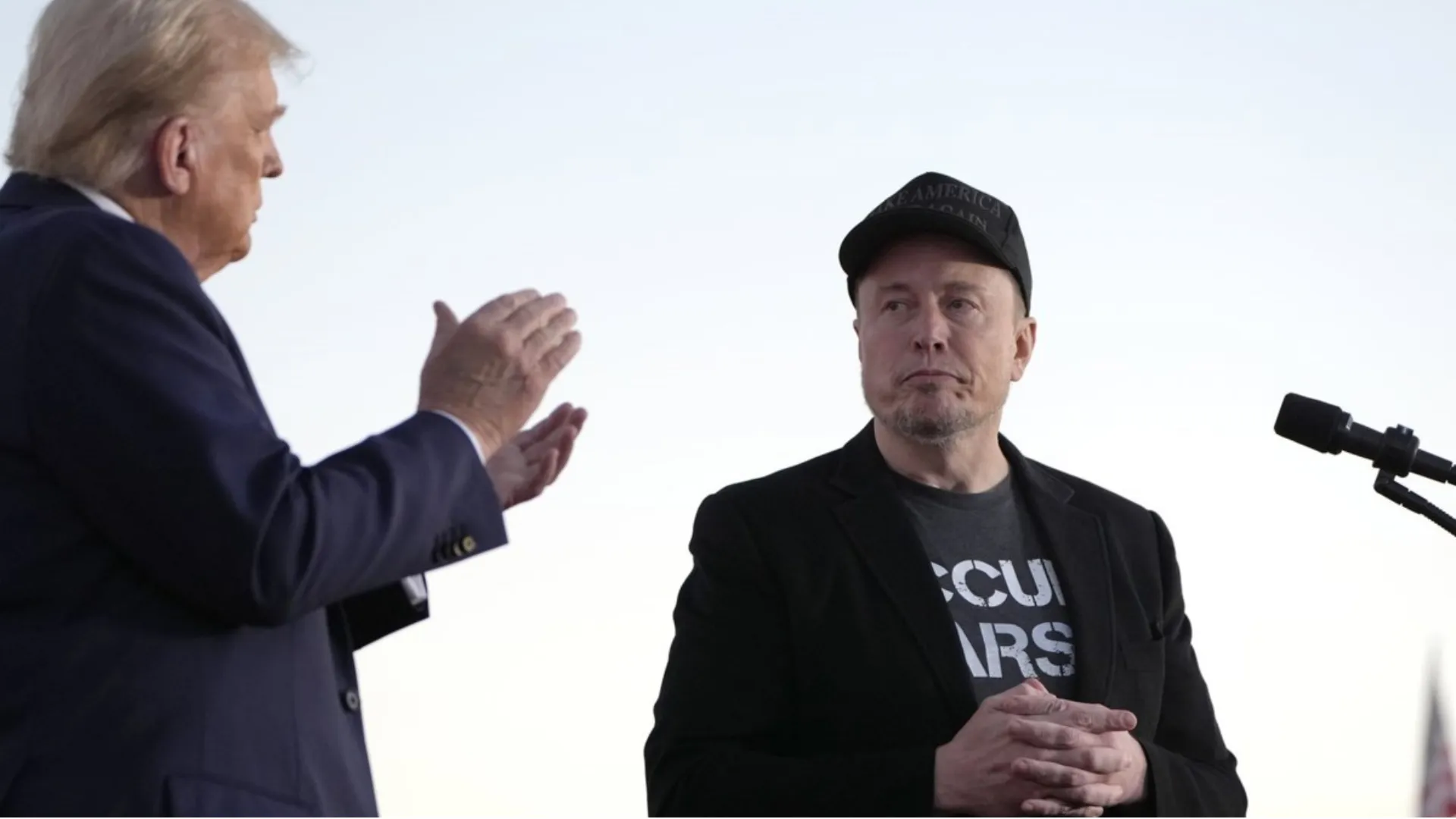
A new analysis by the Wall Street Journal has delivered a sharp blow to one of the central narratives of President Donald Trump’s second term.
According to the report, which examined daily financial statements issued by the U.S. Treasury Department, federal government spending in the months since Trump’s return to the Oval Office has surged by $154 billion compared to the same period in 2024 under President Joe Biden.
The revelation stands in stark contrast to Trump’s highly publicized efforts to slash federal budgets through the Department of Government Efficiency (DOGE), an initiative helmed by tech billionaire and Trump adviser Elon Musk.
DOGE was created early in Trump’s second term to root out what the administration called “waste, fraud, and abuse” across the federal bureaucracy. Since its inception, the department has overseen thousands of layoffs, deep program cuts, and the consolidation of several federal agencies.
But according to Treasury data reviewed by the Wall Street Journal, these austerity measures have not translated into lower overall government spending.
Instead, the government is now spending significantly more than it was during the same time last year, raising fresh questions about the actual efficacy of DOGE, the political messaging behind budget discipline, and what this all means for the administration’s fiscal credibility.

The Treasury Department’s daily financial reports provide a granular view of government receipts and expenditures.
By comparing spending figures from January through early April 2025 with those from the same period in 2024, analysts found a year-over-year increase of $154 billion in federal outlays.
This spike includes higher defense spending, expanded infrastructure investments, administrative costs related to the rollout of new immigration policies, and a significant increase in outlays related to entitlement programs like Social Security and Medicare, which continue to grow due to demographic shifts and inflationary adjustments.
Despite the widespread cuts implemented under DOGE, many of these other spending categories have outpaced savings.
In fact, the data suggests that any reductions achieved by eliminating “waste” have been overwhelmed by parallel increases elsewhere in the federal budget.
This contradiction has not gone unnoticed. Critics of the administration argue that DOGE’s fanfare was more about optics than substance.
“If the administration’s goal was to reduce federal spending, they are clearly failing,” said Sarah Thompkins, a senior fellow at the nonpartisan Committee for a Responsible Federal Budget.
“The numbers tell a very different story than the speeches.”

When Trump re-entered the White House in January 2025, he touted the Department of Government Efficiency as a revolutionary tool for transforming bloated government into a lean, business-minded operation.
The appointment of Elon Musk to lead the initiative gave the project a sense of innovation, disruption, and private-sector gravitas.
Within weeks, DOGE announced sweeping personnel reductions across several federal departments, froze hiring for non-essential positions, and began a systematic review of federal contracts.
The administration touted these moves as proof of its commitment to smaller government.
Yet even as DOGE targeted programs for downsizing, other areas of the federal budget saw dramatic increases. The administration’s focus on defense and border security has led to large appropriations bills.
Trump’s new immigration policies—particularly those related to detention facilities, expedited deportations, and border surveillance—have required substantial upfront investment.
Meanwhile, infrastructure projects championed by the president have also begun to ramp up, with major public works efforts underway in swing states like Pennsylvania, Ohio, and Arizona.
Though popular among voters, these projects have carried significant costs.
Add to that the ongoing growth in mandatory spending categories—Social Security, Medicare, Medicaid—and it becomes clear that DOGE’s reductions, however bold, were unlikely to deliver substantial net savings in the short term.

Despite the contradictory data, the Trump administration continues to promote the DOGE initiative as a resounding success.
In press briefings, administration officials routinely cite agency consolidations and job eliminations as evidence of “streamlining government.”
In a recent statement, White House Budget Director Paul Tregan said, “We have cut waste and bureaucracy at an unprecedented scale. DOGE has already saved the taxpayer billions in redundancies and inefficiencies.”
Yet critics say this messaging is misleading—particularly when set against the actual financial statements issued by the Treasury Department.
“The administration is trying to have it both ways,” said Amanda Rivera, a budget analyst at Brookings.
“They want credit for cutting spending, while also handing out new spending packages for military expansion, infrastructure, and law enforcement. The numbers just don’t support the narrative.”
Indeed, the contradiction has become a talking point for Democrats in Congress. Representative Jamie Raskin (D-Md.) called the administration’s approach “a joke dressed up in Silicon Valley jargon.”
“You can’t tout record spending cuts while spending more than your predecessor. It’s fiscal cosplay,” Raskin said during a floor speech last week.

Interestingly, despite the apparent mismatch between rhetoric and reality, public opinion has remained largely divided along partisan lines.
Supporters of the president continue to view DOGE as a necessary and effective reform tool.
The narrative that Musk and Trump are cutting through “deep state” waste has proven deeply resonant with many Republican voters.
At the same time, many Americans remain concerned about the national debt, which now stands at over $35 trillion.
Even those who support Trump’s policies are beginning to ask whether the administration’s current spending trajectory is sustainable.
According to a recent Pew Research Center poll, 61 percent of Americans say they are concerned that federal spending is increasing too quickly, while just 29 percent believe it is being managed responsibly.
“I like what the president is doing on immigration and defense, but I thought he was going to cut the spending, not grow it,” said Laura McConnell, a small business owner from Ohio who voted for Trump in both 2016 and 2024. “If the budget keeps going up, what happens to the debt?”
The $154 billion increase in spending compared to the same period under President Biden has sparked comparisons between the two administrations.
During his final year in office, Biden was often criticized by Republicans for what they called excessive pandemic-related spending and climate-related initiatives.
But in his 2024 budget, Biden had implemented a series of cost-containment strategies, including a cap on discretionary spending increases and proposals to raise taxes on the wealthiest Americans and corporations to offset new spending.
While those policies were attacked by Republicans as “socialist,” the new Treasury data suggests they may have contributed to slower spending growth compared to the current fiscal trajectory under Trump.

In fact, several economists now say the Trump administration’s approach is delivering higher spending increases—despite cutting programs typically associated with liberal policies, such as environmental protection, housing support, and diversity initiatives.
“The irony is that Trump is spending more while saying less,” said economist Joshua Feldman of Columbia University.
“The Biden administration was more upfront about its spending priorities and tried to offset new spending with revenue increases. Trump is spending and cutting taxes at the same time.”
The Department of Government Efficiency is still in its early stages. While some of its recommendations have been implemented, many are still in the planning phase or tied up in bureaucratic reviews.
Critics say DOGE’s lack of transparency, especially regarding its internal metrics and success benchmarks, makes it difficult to evaluate its real impact.
Some watchdog organizations have called for greater oversight, warning that DOGE’s aggressive cuts to staffing and services could produce unintended long-term consequences.
Others have raised concerns about Musk’s dual role as both a public official and a CEO with ongoing private business interests, questioning whether DOGE is truly about efficiency or about consolidating power and influence.
In Congress, Democrats have introduced legislation that would require DOGE to report quarterly on its activities, including detailed breakdowns of cost savings versus new expenditures.
Meanwhile, Republicans remain divided—some praising DOGE’s ambition, others worrying that it is more sizzle than substance.
As the 2026 midterm elections approach, fiscal discipline may become a defining issue.
Republicans who campaigned on cutting spending will have to explain why spending has gone up. Democrats will likely use the Treasury data to argue that the administration has betrayed its promises of austerity.

The revelation that federal spending under Trump has risen by $154 billion compared to the same period under Biden is more than a policy footnote—it is a direct challenge to the narrative the administration has built around the Department of Government Efficiency.
While the White House continues to tout DOGE’s effectiveness, the Treasury’s numbers paint a more complicated picture.
The promise of “efficiency” has run headlong into the realities of modern governance: rising costs, expanding mandates, and the enduring complexity of a $6 trillion federal budget.
Whether DOGE can turn things around—or whether the spending increase becomes an albatross around the administration’s neck—remains to be seen.
But for now, the numbers are in. And they tell a story that’s hard to square with the slogans.



